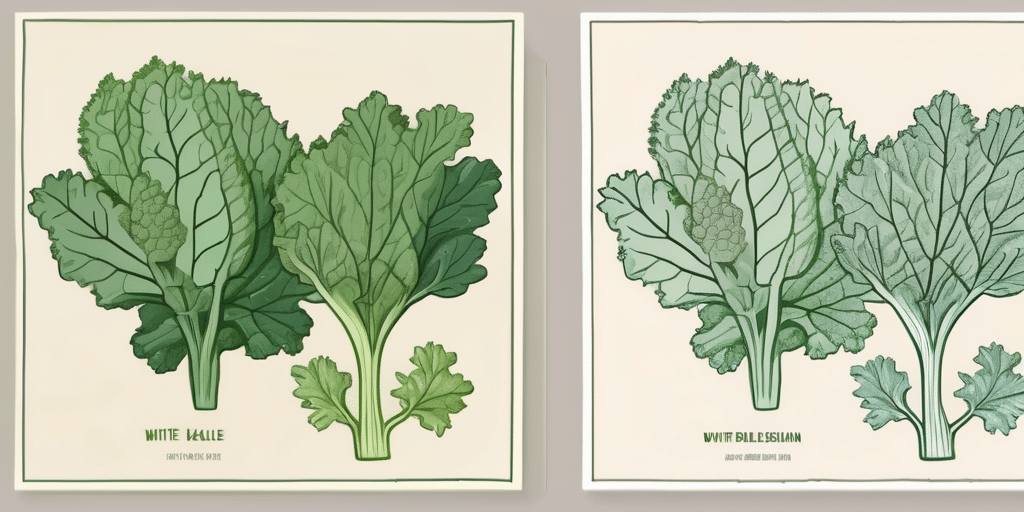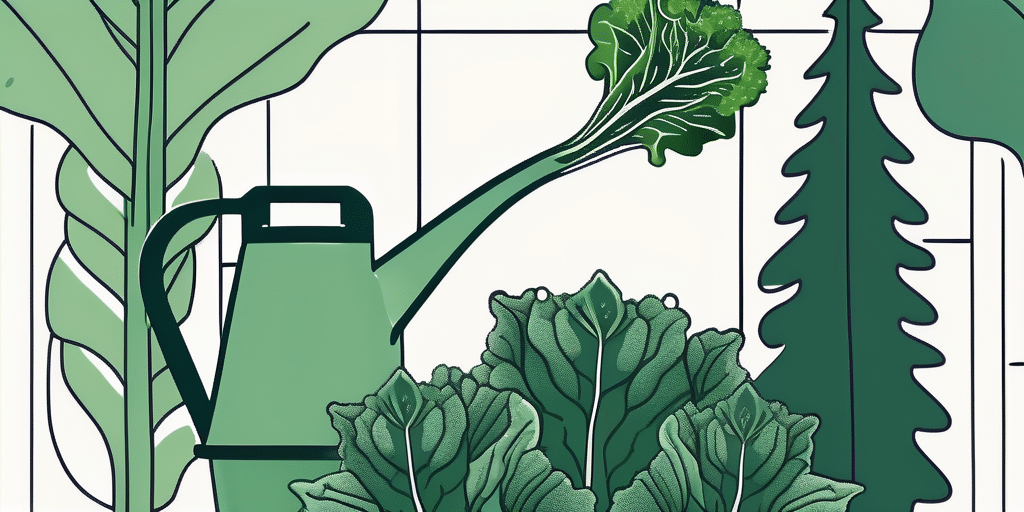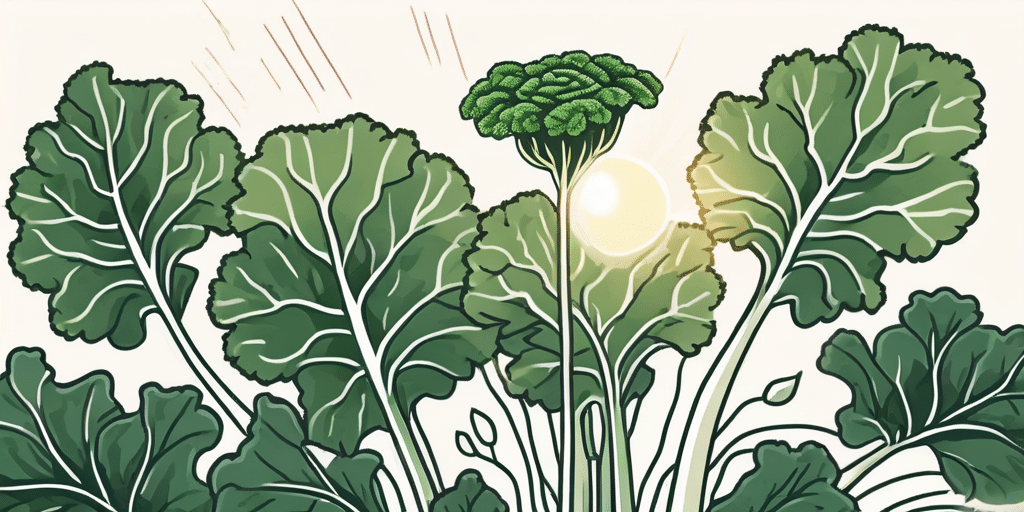White Russian kale is a popular variety of kale known for its soft and tender leaves. It grows well in Zones 6a and 6b, which have a moderate climate that is suitable for growing this nutritious vegetable. Whether you are a seasoned gardener or a beginner, this article will provide you with all the information you need to successfully grow White Russian kale in these zones.
Growing White Russian Kale in Zones 6a and 6b
Growing White Russian kale is relatively easy in Zones 6a and 6b, as long as you provide it with the right conditions. This variety thrives in cool temperatures and can tolerate light frost. Here’s what you need to know:
White Russian kale, also known as Brassica napus var. pabularia, is a nutritious and delicious leafy green that belongs to the cabbage family. Its tender leaves have a mild and slightly sweet flavor, making it a popular choice for salads, stir-fries, and smoothies. Not only is it packed with vitamins A, C, and K, but it also contains essential minerals like calcium, potassium, and iron.
- Choose a Good Location: Select a location in your garden that receives at least 6 hours of sunlight per day. White Russian kale can tolerate partial shade, but more sun will result in better growth. It’s important to note that kale plants can reach a height of 2-3 feet, so make sure to provide them with enough space to spread out.
- Prepare the Soil: Kale prefers well-draining soil with a pH between 6 and 7. Amend the soil with organic matter such as compost or well-rotted manure to improve its fertility and drainage. This will create a nutrient-rich environment that promotes healthy root development and overall plant growth.
- Sow the Seeds: You can start White Russian kale indoors 4-6 weeks before the last frost date or directly sow the seeds outdoors in early spring. Plant the seeds about ½ inch deep and 12-18 inches apart. Ensure that the soil is evenly moist during germination, which usually takes around 7-14 days.
- Watering: Keep the soil consistently moist but not waterlogged. Water deeply when the top inch of soil is dry. Mulching around the plants can help retain moisture and prevent weed growth. Additionally, providing a drip irrigation system or using a soaker hose can ensure that the water reaches the roots without wetting the leaves, reducing the risk of fungal diseases.
- Fertilizing: Kale is a heavy feeder, so it benefits from regular fertilization. Apply a balanced organic fertilizer according to the manufacturer’s instructions, or use compost tea as a natural alternative. Start fertilizing the plants about 3-4 weeks after transplanting or when they have reached a height of 4-6 inches. This will provide them with the necessary nutrients to produce lush foliage.
- Pest and Disease Control: White Russian kale is generally resistant to pests and diseases. However, you should still keep an eye out for common garden pests like aphids, cabbage worms, and slugs. Regularly inspect the plants for any signs of infestation, such as chewed leaves or sticky residue. If necessary, use organic pest control methods like neem oil, insecticidal soap, or introducing beneficial insects like ladybugs to keep these pests at bay.
By following these guidelines, you’ll be well on your way to growing a bountiful harvest of White Russian kale. Remember to harvest the outer leaves when they reach a desired size, allowing the inner leaves to continue growing. With its vibrant green color and delectable taste, White Russian kale is sure to become a staple in your garden and kitchen!
Climate & Hardiness in Zones 6a and 6b
Understanding the climate and hardiness of Zones 6a and 6b is crucial for successful kale cultivation. These zones experience cold winters and mild summers, making them suitable for White Russian kale. Here’s what you need to know:
- Cold Tolerance: White Russian kale can tolerate temperatures down to 20°F (-6°C) and may survive even colder conditions with proper protection.
- Heat Tolerance: While this variety can handle some heat, it tends to bolt and turn bitter in prolonged hot weather. Planting it during cooler months can help avoid this issue.
- Growing Season: Zones 6a and 6b have an average growing season of 150-180 days, providing ample time for White Russian kale to mature.
When to Plant White Russian Kale in Zones 6a and 6b
The timing of planting is crucial for the successful growth of White Russian kale in Zones 6a and 6b. Here are some guidelines to help you determine the best planting time:
Spring Planting: Sow the seeds outdoors as soon as the soil can be worked, typically in early spring when the soil temperature reaches around 40°F (4°C). This will allow the plants to establish before the hot summer temperatures.
Fall Planting: To extend the growing season, consider planting White Russian kale in late summer or early fall, about 6-8 weeks before the first expected frost. This will allow the plants to mature during the cooler months and provide you with a fresh harvest.
When to Harvest or Pick White Russian Kale in Zones 6a and 6b
White Russian kale is ready to be harvested when the leaves reach the desired size and texture. Here are some tips to help you know when your kale is ready to be picked:
- Leaf Size: The leaves should be at least 8-10 inches long before harvesting. Younger leaves have a milder flavor, while older leaves tend to be stronger and more bitter.
- Leaf Texture: White Russian kale has a tender texture, so look for leaves that are smooth and crisp. Avoid leaves that have wilted or show signs of disease or pest damage.
- Continuous Harvest: Harvest outer leaves first, allowing the inner leaves to continue growing. This will ensure a continuous supply of fresh kale throughout the season.
Frequently Asked Questions
Q: Can I grow White Russian kale in containers?
A: Yes, you can grow White Russian kale in containers as long as the containers are large enough to accommodate the plant’s root system. Ensure the containers have drainage holes and provide adequate water and nutrients.
Q: How often should I water White Russian kale?
A: Water White Russian kale whenever the top inch of soil feels dry. Aim for deep watering to encourage strong root development and avoid shallow, frequent watering that can lead to shallow roots.
Q: Can I eat White Russian kale raw?
A: Yes, White Russian kale can be eaten raw. It is often used in salads or added to smoothies for its nutritional benefits. However, massaging the leaves with olive oil or dressing can help tenderize them.
Q: How long does it take for White Russian kale to grow?
A: The growth rate of White Russian kale varies, but you can expect it to reach maturity in about 55-75 days from the time of planting. Factors such as temperature, sunlight, and soil fertility can affect the growth rate.
With these guidelines, you are well-equipped to grow White Russian kale in Zones 6a and 6b. Whether you enjoy it in salads, sautés, or as a nutritious green smoothie ingredient, this versatile vegetable will be a delightful addition to your garden and your plate.
Join Our Gardening Community
Ready to take your White Russian kale and other garden ventures to the next level? Subscribe for free to How to Grow Everything and start building the garden of your dreams today! Receive personalized gardening advice tailored to your specific zone, experience, and interests. Enjoy the best gardening tips, special offers, and insightful articles—all delivered directly to your inbox. Join our family of garden enthusiasts and transform your green space into a lush oasis. It’s 100% free, with no spam, just pure gardening gold.






